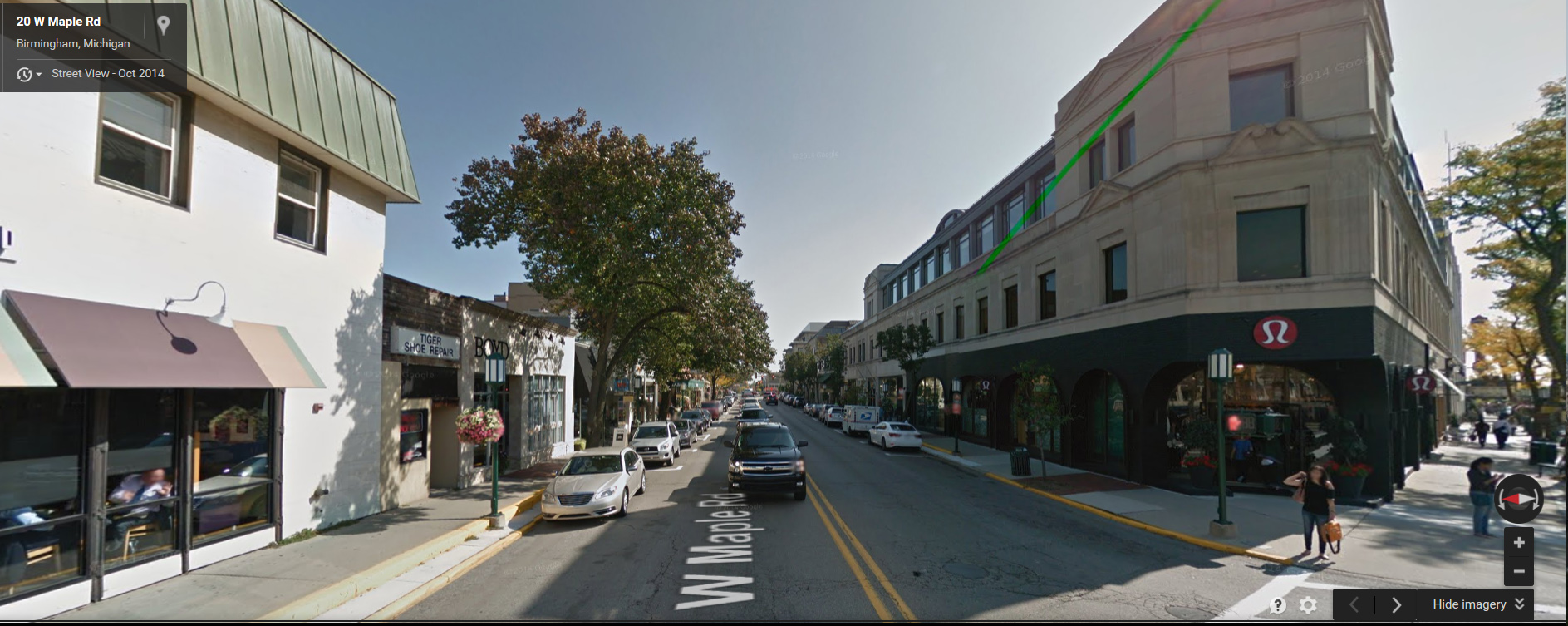We still don’t seem to understand the problem of nor the solution to congestion. Whether its the Morning News wondering why a temporary closure leads to severe backup when there was little advanced warning and even less available possibilities to re-route and adjust or this piece on KERA talking about how a single accident can stop all downtown Dallas traffic. Well, all the traffic on the highway anyway. Because that’s pretty much all the traffic. And that’s fundamentally the problem.
Both of the pieces mentioned above follow the antiquated supply-side thinking about congestion and its remediation. In other words, “if it’s backed up the only answer is newer and bigger.” The reality is that congestion comes from the convergence of three issues:
1) Mode – Everyone is in cars
2) Time and Distance – Rush hour – Everyone is going the same direction at the same time due to land use imbalances, ie deeper structural problems in city form (caused, of course, by the highways)
3) Space – All types of trips (local, regional, and interstate) are competing for the same limited space on a highway.
In order to fully and truly address the problem, we have to diversify each of these while being smarter about capacity. The underlying culprit here is one of jurisdiction. The city generally only cares about city streets while the region and state only care about highways. And the transit agency is only caring about transit.
The more highways we build, the more we disconnect the city street grid and undermine all of the capacity it holds. As shown by Vancouver, the city grid holds more capacity than a highway system does because it has 1) many parallel routes (redundant linkages in complexity science terms) allowing for route choice and adaptability, 2) it prioritizes shorter trips – if you can shorten the average trip you inherently increase the capacity of an existing system without actually adding any physical capacity at all, and 3) allows for multi-modal transportation to co-exist.
When the inner-city highways sever the grid due to their inherent prioritization of speed and throughput they cut many city linkages rendering many city streets fairly useless. On the other hand, where the highways do connect at exits, they tend to overwhelm these streets. The result is a system of streets that are either invaded or abandoned. The irony is that we treat the invaded streets as the bigger problem because more people are on them and suffering through those delays.
When the deeper issue, when 90% of traffic is on 10% of road capacity (ie congestion), are those other 90% of abandoned streets. Nobody wants to be on abandoned streets, not the least of which are investors or businesses dependent upon visibility and traffic. People attract people. Of course, cars repel people. So neither work. Such is the state of the failed city and giving traffic engineering primacy. It’s like gardening with a firehose. You only end up washing away the garden.
—————————————
It’s with that basic understanding that I’m going to conceptually show how the grid handles traffic far better than highways, which is why highways don’t belong in the center of the city where you want density, diversity, and vibrancy. You have to spread traffic around in space (many redundant connections – a grid), by mode (foot, bike, and transit – all of which require density to be convenient), and time and direction (we have to steer more housing where jobs are and more jobs where housing is. In that way, by nudging the market, it can solve congestion for us. That is, if we’re smart.).
So let’s talk a little bit about Supply and Demand of streets and places as we tend to follow rigid rules that aren’t terribly rigid. Or thoughtful.
First, we tend to think of capacity only in vehicular terms. How many cars move past a spot per hour or per day? Again, only cars. But cars, in the sense of spatial efficiency, are the least efficient way to move lots of people around. Lots of people means lots of economic activity happening. It means lots of value. Therefore, moving lots of cars isn’t necessarily a good thing, but moving lots of people is.
Furthermore, the effort to move lots of cars undermines both the ability to move lots of people as well as the demand for place, to even go there in the first place. Places invaded by cars are loud, polluted, and unsafe. Guess what, pedestrians don’t like it. Pedestrians populate businesses, not cars. Prioritize cars, you lose pedestrians and thus business.
If we want to talk capacity, it’s important to know that Champs Elysees vehicular traffic counts are 80k per day. Meanwhile it moves 500,000 pedestrians per day. Las Ramblas only has one vehicular travel lane in each direction, but it manages to move 250,000 pedestrians per day.
Let’s look even smaller and closer to home. Take this example in suburban Detroit.
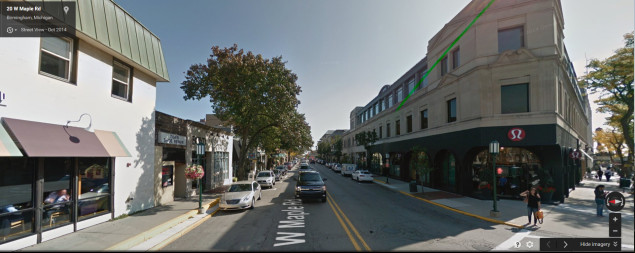
This is only two travel lanes. It manages to move over 24,000 cars per day. Conventional ‘capacity’ models might suggest 24,000 cars per day would require this to be 5 or 7 lanes. It does so in 2. Parallel parking protects pedestrians. The building form creates a sense of enclosure and clustering of uses and businesses allowing for synergies. The result is demand to be there. It’s a comfortable, attractive place.
Demand and modal split flips the entire notion of supply and capacity. We could widen this to six lanes and capacity would theoretically go up, but then we would destroy all the buildings, all the character, and all the reasons to go there. Then, the new six lanes might only move a few thousand people and real estate values would plummet. In other words, never take economic development advice from traffic engineers.
That brings me back to traffic projections and just how ridiculous they are. First, US75.

Okay, it carries 250k cars per day. Probably about zero pedestrians. I hope.
The red number below existing counts is 2030 projections. Somehow US75 will carry 415k per day, making it the busiest road in the entire country. As if this is something that would EVER be a good thing. None of those cars would move and we would all suffocate from carbon monoxide.
These projections and the logic behind them are severely limited. They simply say x-traffic today, times y-population in the future, according to yesteryear’s travel patterns = z-traffic counts. Nevermind how ridiculous the results might be, how cartoonishly large and expensive a facility would have to be to handle all of that traffic, said facilities destruction of the very destinations drawing that traffic, and all while ignoring our ability to manage that theoretical demand. Dumb.
Yet we are a slave to them.

When looking at 345 we see traffic counts of 141k (trending down since a peak in 2008 – a trend ignored), a projection of nearly 200k vehicles per day (a number oft-cited because FEAR factor), and 12.9 number which is the percent of existing truck traffic. That number will be important momentarily.
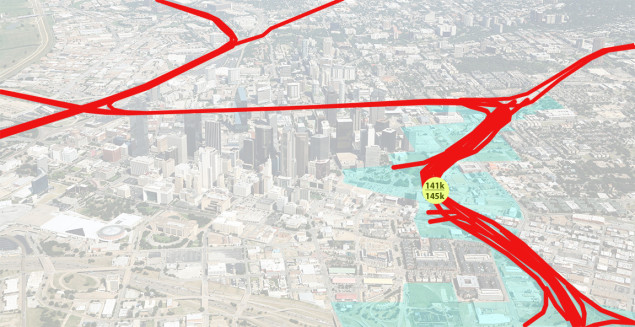
Above is the diagram of the existing 345 with the highlight of the 345 study area which is nearly all vacant and underutilized land. It carries a shade over 140k on a structure expected to carry about 145k. In the 2000s, it tipped over that and has since receded. We might surmise it is finding equilibrium. The question is whether that equilibrium is a good thing for the city.
Shockingly, people don’t like being next to such a thing, therefore demand to occupy square footage is low, and therefore buildings don’t exist. Nor does tax base. And we want to pay $240 million to move traffic poorly and undermine tax base. Bravo.
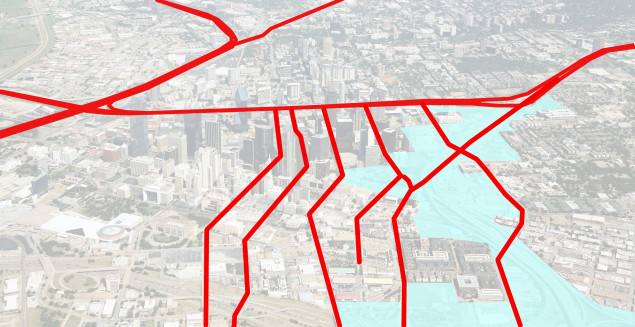
Above is the north-south city street network. It is also stupid. Either they are one-ways, they inexplicably stop, or they criss-cross, which is also bad from a network standpoint. While dense places require a density of intersections you don’t want an intersection of two streets making the same directional linkage. All of which undermine the functionality of city streets while the highways suck up all the traffic.
We can fix these issues.
By removing 345, the 12.9% of truck traffic will be re-routed around the city. They only cut through because the highway exists. From a prioritization standpoint, if quality of life underpins value and the demand to populate a place, these trucks cause undo congestion and pollution. They belong outside the city. I would expect that something like another 12% of this traffic is also long distance car traffic where better routes are available, but since this seems like a straight shot, people use it. 25% reduction in area demand is the average for these kind of highway capacity reduction projects. Some, like the Westside Highway in New York, the drop was as much as 53%.
If we have to accommodate 75% of the 141k (about 106k) of existing traffic in the near-term, we can do that simply by fixing the grid.
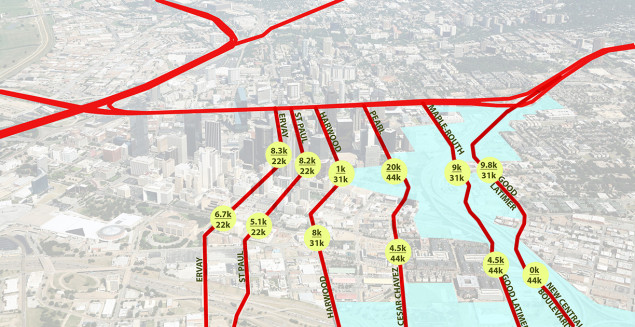
The dots and the numbers within them represent latest available traffic counts over the potential capacity if we can better reconnect these north-south streets. I’ve broken them out as north of Main counts and south of Main counts.
Ervay and St. Paul would go two-way. As would Harwood where it is currently one-way. Cesar Chavez would be connected to Pearl so that the current connection wouldn’t go from 6 lane boulevard to 3 lane one way to 6 lane boulevard. Good Latimer would link with Maple Routh to allow for a new parallel boulevard where the existing 345 sits. It would link with the existing Good Latimer.
If we add up the current traffic counts south of Main in relation to the total potential capacity of these streets, we see that there are currently only 39.5k out of a potential capacity of 207k, leaving a gap of 167.5k (when we need to accommodate 106k). North of Main, the latent capacity of these streets is 194k minus 47k for existing traffic = 147k. Again, not only more than the 106k we need to accommodate, but more than all of the traffic currently on 345.
Furthermore, if there is a wreck or closure on one of these streets, travelers can re-route to the other connections and still get to where they’re going unlike if a wreck were to occur on 345.
Over the long-term, this redevelopment would add 27,000 new residents and 22,000 new jobs, bringing destinations and amenities closer to the core, shortening trips (again, increasing capacity without a single widening), and adding the kind of density and tax base necessary in order to leverage the second downtown DART line. Doing so would allow us to add more transit lines and more trains to existing tracks, increasing the convenience and frequency of mass transit.
By removing 345, we aren’t taking away some convenience. Instead, we would be adding road capacity, transit capacity, improving quality of life, increasing tax base, and building a better city. All while unburdening the public sector of a $240M maintenance bill.


